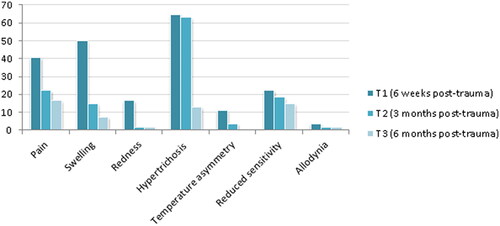Figures & data
Figure 1. Enrollment flow diagram.

Table 1. Overview of the study population according to fracture type.
Figure 2. Percentage of children experiencing a specific symptom at T1, T2, and T3.

Table 2. Range of motion and dexterity of affected versus unaffected side.
Table 3. Variables of influence on recovery of ROM and dexterity over time.
